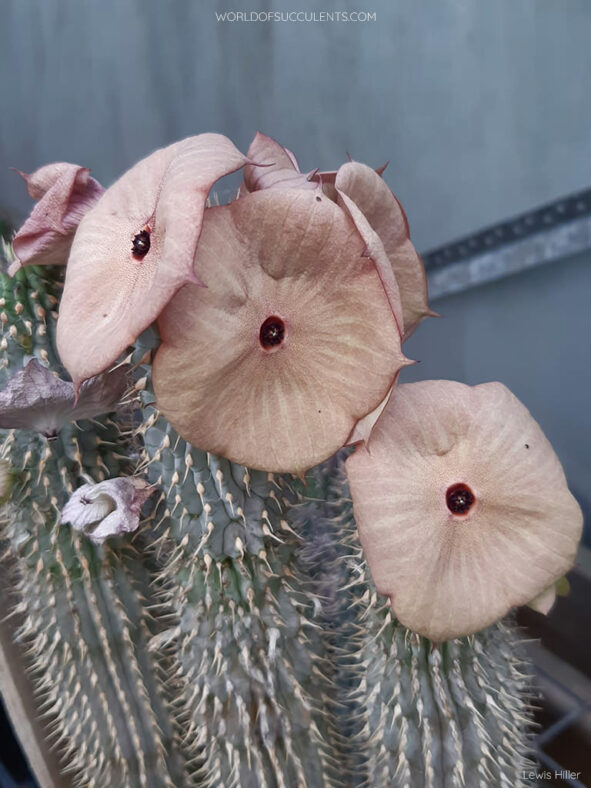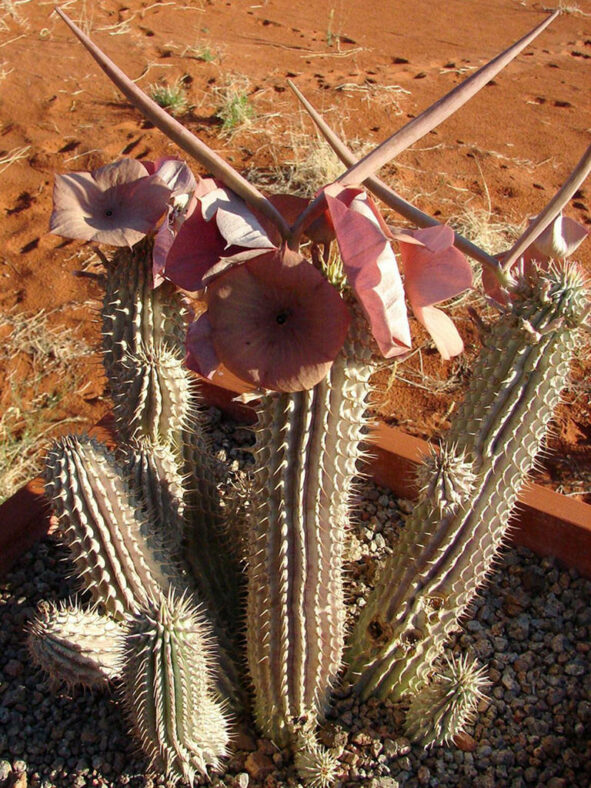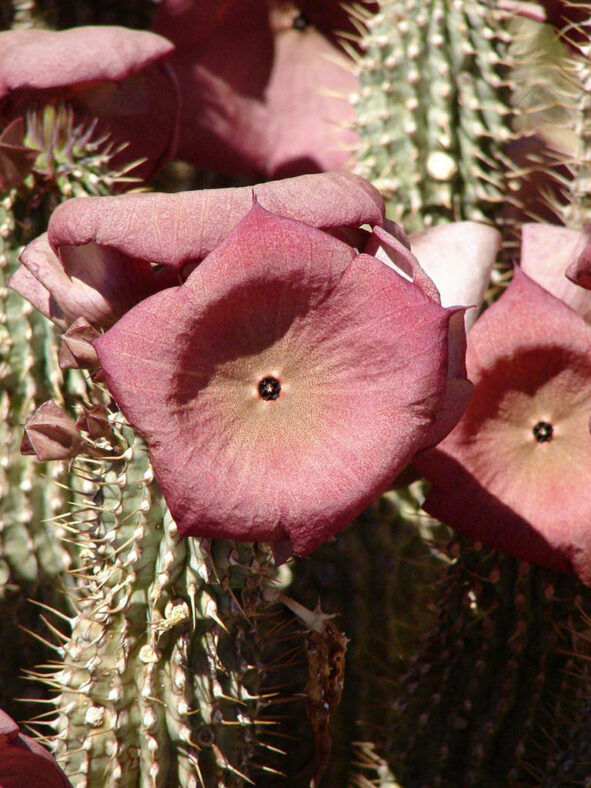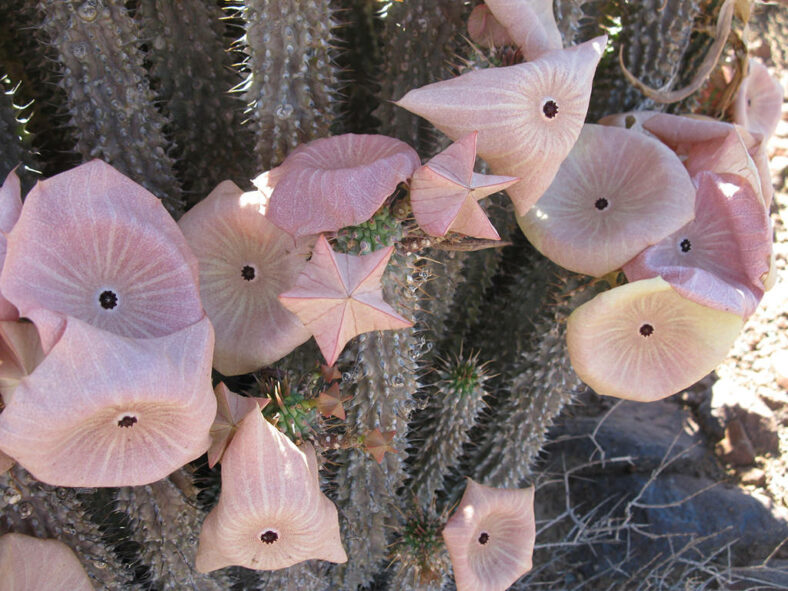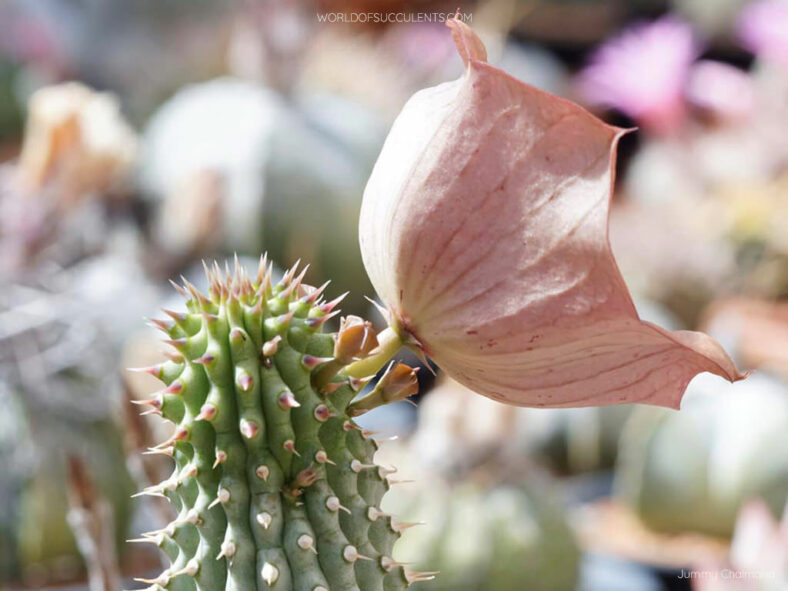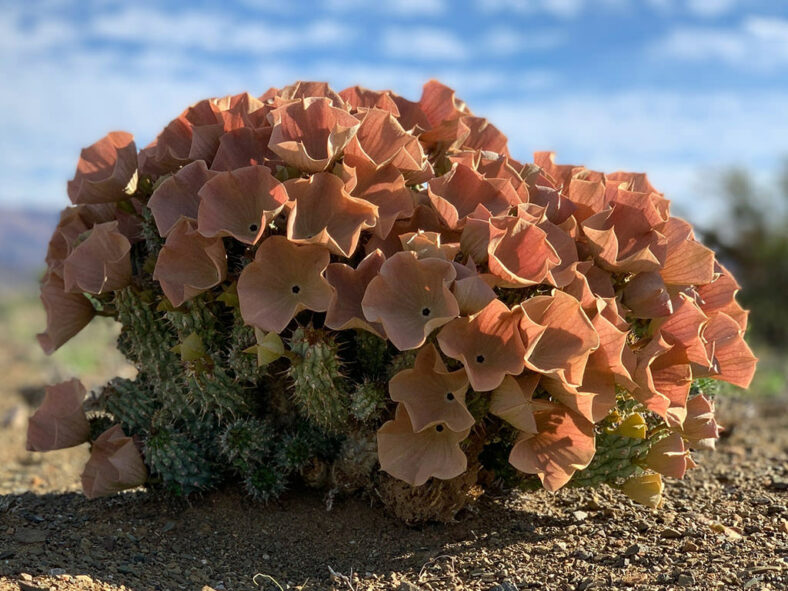Hoodia gordonii has become known globally for its claimed effect of appetite suppression. However, a 2006 review found no scientific evidence supporting it as an appetite suppressant in humans.
Scientific Name
Hoodia gordonii (Masson) Sweet ex Decne
Common Name(s)
Baboon Ghaap, Bitter Ghaap, Bushman's Hat, Kalahari Cactus, Queen of the Namib, Wild Ghaap
Synonym(s)
Ceropegia gordonii, Monothylaceum gordonii, Scytanthus gordonii, Stapelia gordonii
Scientific Classification
Family: Apocynaceae
Subfamily: Asclepiadoideae
Tribe: Ceropegieae
Genus: Hoodia
Etymology
The specific epithet "gordonii (gor-DOH-nee-eye) honors Robert Jacob Gordon (1743-1795), a Dutch explorer, soldier, artist, naturalist and linguist of Scottish descent. He observed a Hoodia species in 1779 and made a drawing of the plant that was described and published by Francis Masson in 1797 as Stapelia gordonii.
Origin
The native range of Hoodia gordonii is from the Brandberg Mountain in Namibia southwards into the Northern Cape, Western Cape, and just the southmost parts of the Free State province of South Africa. It grows on stony slopes to gravelly flats in lower areas.
Description
Hoodia gordonii is a cactus-like succulent shrub with thick, cylindrical stems with prominent tubercles fused in the lower half into 11 to 17 angles along the stem. Each tubercle is tipped with a sharp spine, reaching 0.5 inches (1.2 cm) in length. The stems are erect, grey-green to grey-brown, and can grow up to 3.3 feet (1 m) tall and 2 inches (5 cm) in diameter.
In spring, the plant produces inflorescences of 1 to 4 flowers on up to 1.2 inches (3 cm) long stalk. The flowers open successively and have a circular to quite clearly 5-lobed corolla that measures up to 4 inches (10 cm) in diameter. The outside of the corolla is pale flesh-colored with darker veins, while the inside is flesh-colored to deep purple-red, usually with darker veins. The corona is purple-black and up to 0.25 inches (0.6 cm) wide, usually just touching the side of the tube at the mouth. The fruits are pairs of follicles that resemble small antelope or goat horns.
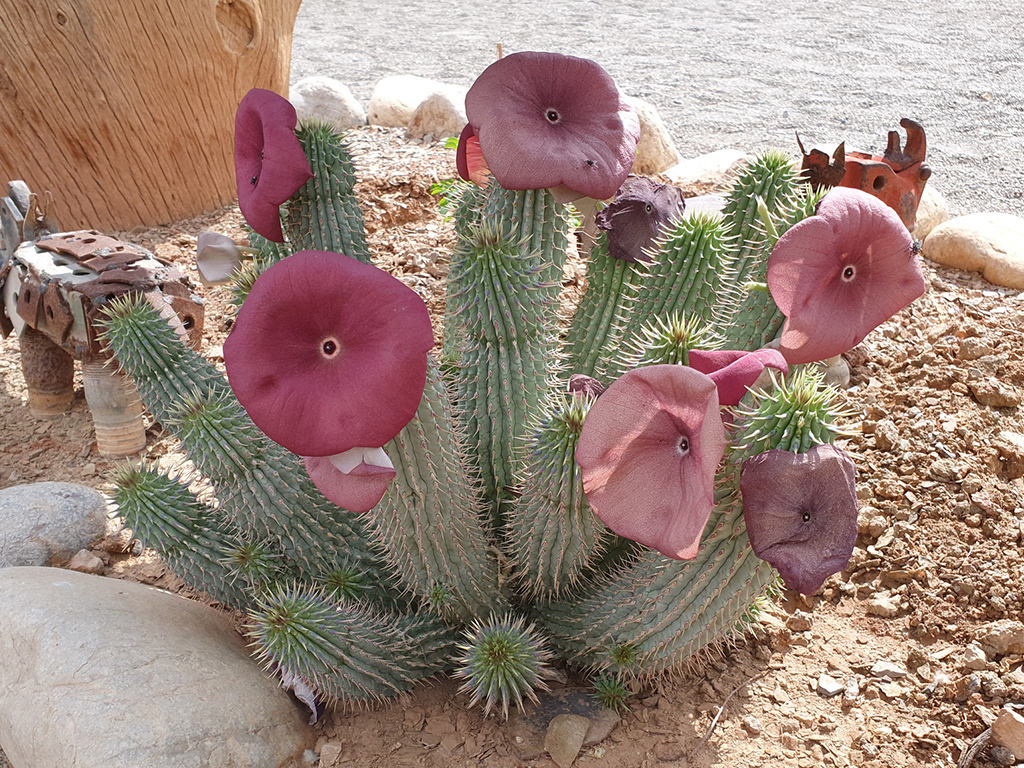
How to Grow and Care for Hoodia gordonii
Light: Hoodia gordonii prefers full sun but will benefit from light shade during the hottest summer days. Indoors, place the plant near the brightest window of your home because it will stretch if it does not receive enough sunlight. Avoid abruptly moving a plant adapted to lower light levels to full sun to prevent sunburn.
Soil: Use commercial potting soil mix for succulents or prepare your own with 50 to 70 % mineral grit, such as coarse sand, pumice, or perlite.
Temperature: The plant thrives in warm outdoor environments with low to moderate humidity. It does not like winter cold and should remain fairly dry and warm during its dormancy. Hoodia gordonii grows best in USDA Plant Hardiness Zones 10a to 11b, with average minimum winter temperatures ranging from 30 to 50 °F (-1.1 to 10 °C).
Watering: It has typical watering needs for a succulent. During the growing season, from spring to fall, water the plant thoroughly and allow the soil to dry between waterings. When it goes dormant in winter, it needs almost no water, about once a month.
Fertilizing: In order to keep the plant healthy and thriving, fertilizing is a good idea. Feed it with water-soluble fertilizer diluted to half the recommended strength, but only when the plant is actively growing.
Repotting: Repot Hoodia gordonii in spring, just before the growing season. It has shallow roots and does not require too much soil to grow. Always pick a container with drainage holes.
Propagation: The best way to propagate this succulent is from stem cuttings. To ensure good rooting, take cuttings during the growing season. The plant is also easy to start from seeds in spring.
Learn more at How to Grow and Care for Stapeliads.
Toxicity of Hoodia gordonii
Hoodia gordonii is non-toxic and safe to grow around kids and pets.
Links
- Back to genus Hoodia
- Succupedia: Browse succulents by Scientific Name, Common Name, Genus, Family, USDA Hardiness Zone, Origin, or cacti by Genus
Photo Gallery
Click on a photo to see a larger version.
